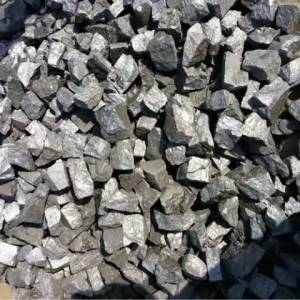Description
Ferroalloys are crucial metallurgical additives used in the production of steel and other ferrous alloys. They're master alloys, meaning they're composed primarily of iron (Fe) and one or more other alloying elements, carefully formulated to introduce specific properties into the base metal. This detailed description explores the diverse applications, benefits, and key characteristics of ferroalloys.
What are Ferro Alloys?
Ferroalloys are not a single product, but rather a family of materials, each designed to impart unique characteristics to steel. They are manufactured through a process of smelting, typically using electric arc furnaces, to achieve a precise composition of alloying elements. These elements are carefully controlled to ensure consistent quality and predictable performance in steelmaking.
Key Alloying Elements and Their Effects:
The most common alloying elements found in ferroalloys include:
- Manganese (Mn): Improves strength, hardness, toughness, and weldability. Contributes to the desulfurization of molten iron.
- Chromium (Cr): Enhances corrosion resistance, particularly crucial for stainless steels. Increases hardness and strength at elevated temperatures.
- Silicon (Si): A deoxidizer, reducing the oxygen content of molten steel and improving its castability. Also contributes to strength and magnetic properties.
- Nickel (Ni): Enhances strength, toughness, and corrosion resistance. Contributes to austenite stability in stainless steels.
- Molybdenum (Mo): Improves strength, hardness, and high-temperature performance, particularly in high-speed steels. Increases corrosion resistance.
- Vanadium (V): Refines the grain structure, increasing strength and toughness, especially at high temperatures. Improves creep resistance.
- Tungsten (W): Increases hardness and wear resistance, especially important in high-speed cutting tools.
Types of Ferro Alloys:
The specific alloying elements and their proportions determine the type of ferroalloy. Some common examples include:
- Ferromanganese: Contains high levels of manganese and is widely used for desulfurization and alloying.
- Ferrosilicon: Contains silicon and is primarily used as a deoxidizer. Various grades exist, depending on the silicon content.
- Ferrochrome: Contains chromium and is vital for the production of stainless steels.
- Ferrovanadium: Contains vanadium and is used to enhance the strength and toughness of steel.
- Ferromolybdenum: Contains molybdenum and improves the high-temperature strength and corrosion resistance of steels.
- Ferrotungsten: Contains tungsten and is critical for the production of high-speed steels.
- Ferrotitanium: Contains titanium and is a powerful deoxidizer and also improves the strength and ductility of steel.
- Ferrosilicon Manganese: A combination of silicon and manganese, offering benefits from both elements.
Applications:
Ferroalloys are indispensable in a vast range of steel applications, including:
- Construction: Reinforcing bars, structural steel, and pre-stressed concrete.
- Automotive: Car bodies, engine components, and chassis.
- Aerospace: High-strength, lightweight alloys for aircraft and spacecraft.
- Machinery & Equipment: Gears, bearings, and cutting tools.
- Oil & Gas: Pipelines, drilling equipment, and pressure vessels.
- Railways: Rails, wheels, and other components.
Benefits of Using Ferro Alloys:
- Improved Mechanical Properties: Enhanced strength, hardness, ductility, toughness, and wear resistance.
- Enhanced Corrosion Resistance: Protection against rust and degradation.
- Improved Weldability: Facilitates easier and stronger welding.
- Controlled Microstructure: Leads to refined grain size and improved properties.
- Cost-Effectiveness: Relatively inexpensive way to significantly improve steel quality.
